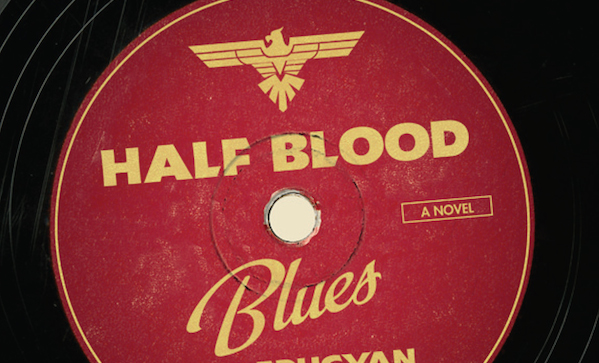Indulge me for a second. Ever stuck around the Horseshoe Tavern, or wherever your local notable music venue may be, a couple too many hours after last call? A space once packed, now cavernous, walls of sound replaced with echoes, notes of stale beer hanging like curtains—and there’s you and your motley party of bartenders, band members, and assorted hangers-on, too lively and too far in the bag for four AM. You should’ve left with the crowd, but you stuck around because it feels like something essential might happen, and damn the morning’s consequences, whatever they might be. Well, that’s what reading Half-Blood Blues feels like—and incidentally, if you can’t picture that because you’ve never done it, make friends with some industry people immediately and be willing to ruin tomorrow for the possibility that something might happen tonight.
Essential and immediate is exactly what Half-Blood Blues feels like. It’s the sort of book you pick up and accidentally read all in one sitting, a low-frequency hum of tension driving you all the way. In fact, it reads a bit like Down and Out in Paris and London; just replace London with Berlin, move it forward to 1939-40, and replace George Orwell and friends with a posse of black jazz musicians hoping to cut a record in trying circumstances. Part of the book’s magic is that Edugyan takes us in the direction of well-trod territory, but veers off to someplace new. It doesn’t matter how many novels and films you’ve seen about the Nazi rise or the occupation of Paris—Half-Blood Blues makes it fresh.
I want to say that Edugayan’s language is poetic, but I also don’t want to be misunderstood. It isn’t poetic in the contrived way sometimes used to describe authors working too hard to say that a stone is stony. It’s poetic in a beautiful, almost effortless way: “Weeks bled by, soon the light in the alleys begun failing, and then we was crunching through a crust of snow on the cobblestones of them say streets. It was damn near November. The streets along the Seine gone to glass, shining white and delicate.”
Equally effortless are her descriptions of music, something most writers struggle with: “It was the sound of something growing a crust, some watery thing finally gelling. The very sound of age, of growing older, of adolescent range being tempered by a man’s heart. Yeah, that was it. It was the sound of the kid’s coming of age. As if he taken on some of old Armstrong’s colossal sadness.”
Most of the Canadian reading public picked up Half-Blood Blues when it first came out in 2011. After all, being shortlisted for both the Booker Prize and the Governor General’s Awards create no small amount of buzz. But, if you missed it then, now’s a great opportunity to pick it up.
Dave Robson is the editor of DailyXY. He spends his time reading books, drinking Scotch, and smoking cigars.
During last year’s Canada Reads, panellist Charlotte Grey suggested that the eventual winner, Lisa Moore’s February, would be rejected by male readers due to the lack of a strong male protagonist. We disagreed with the assessment then, just as we disagree with the idea now that men will only read a certain kind of book or certain kind of character by default. That’s why, this year, we reviewed all five Canada Reads selections, operating under the assumption that men are more literate than Charlotte Grey is willing to consider. Also check our our reviews of The Orenda, by Joseph Boyden, Annabel, by Kathleen Winter, Cockroach, by Rawi Hage, and The Year of the Flood, by Margaret Atwood.


